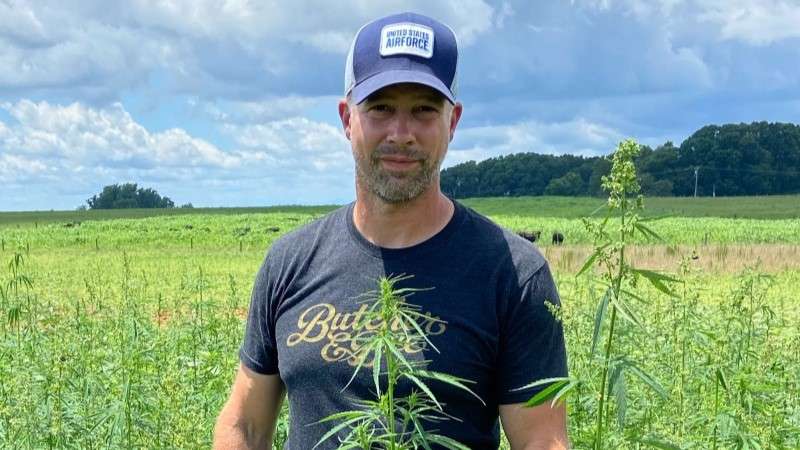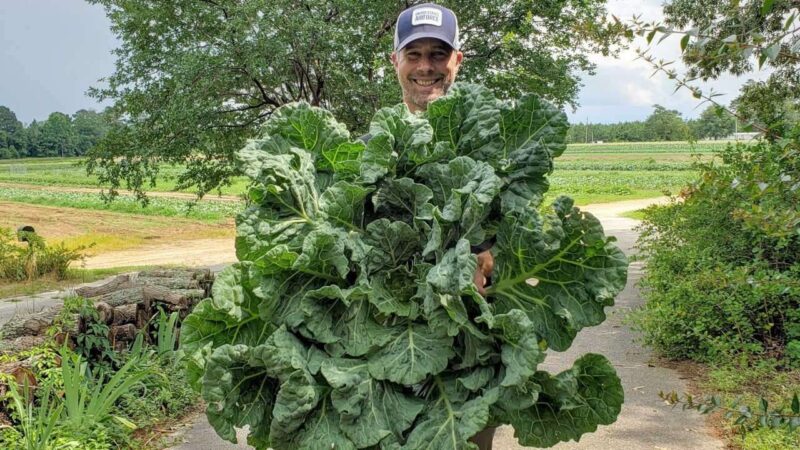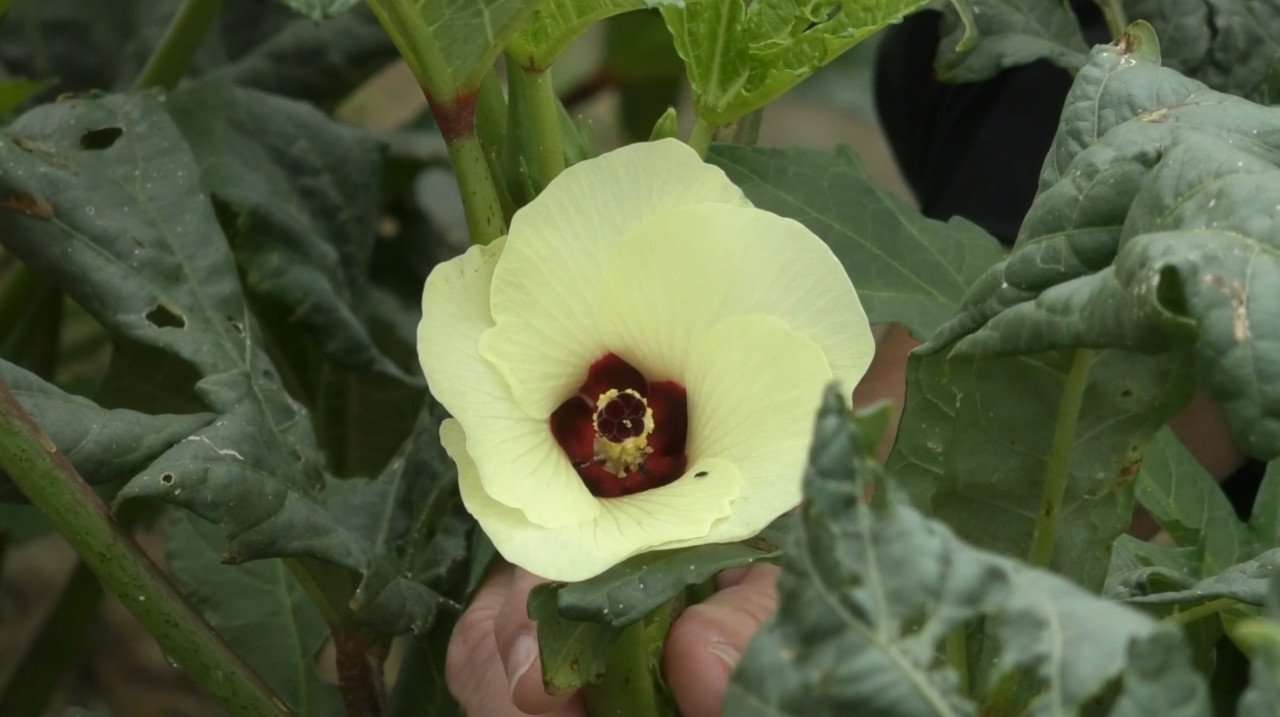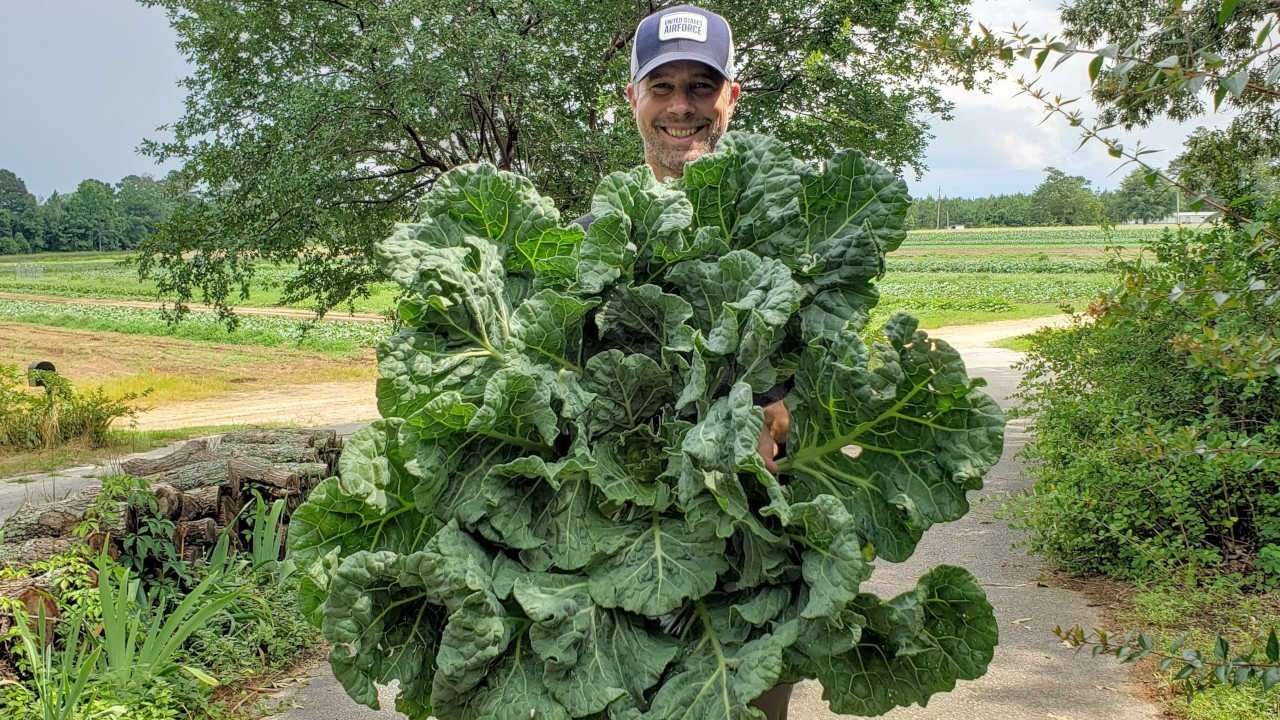Bradford Family Still Farming Like It’s 1699
Heirloom Crops and Ancient Ways Lead to TV Appearance
SUMTER, SC — There’s something familiar about the Bradford Family farm off the beaten path here near Sumter, something ancient, something comforting. But there’s also something that’s nearly unique in this day and age of modern agriculture where bigger is better. It’s so special the Bradfords are the subject of this week’s episode of The RFD-TV Network’s (DirecTV, Dish, Sling, cable) popular series Where The Food Comes From, titled “Still Farming Like It’s 1699.”
Clemson alumnus Nat Bradford, wife Bette and their kids work a tiny 24-acre plot, producing a dazzling array of heirloom produce that shows up on finer restaurant tables from Columbia to Charleston, Atlanta to Asheville. The goal’s not to grow the most of anything – it’s to grow the best of everything.
And much of that comes straight from the Bradford lineage. The farm sits on land Bradfords have been farming here for more than 200 years. Nat still grows many of the same crops his ancestors did – amazingly from the same seeds, which have been handed down generation to generation.
Bradford began his career as a Clemson University-educated landscaper. Since childhood, he’d always grown a few of the family’s locally famous Bradford watermelons – which were raved about in horticultural reference books as long ago as the 1850s – but had never thought of farming as a career, like his grandfather “Chief” Bradford and countless others had for generations before.
But when his grandfather passed a few years ago, Nat made a discovery that changed his path. In Chief Bradford’s home and freezer, Nat found cans and jars of seeds from various family crops that his grandfather had saved and set aside, same as countless generations of Bradfords before him. It was a tangible link to Nat’s personal history – those seeds were the direct descendants of Bradford farmers, just as he was.
Bradford collards grow huge, with leaves as big as tires. Amazingly, the stalk stays sweet and tender – you can eat it raw from the field, as Where The Food Comes From host Chip Carter does on-air.
Bradford okra can reach a foot in length and still be so tender it, too, can be snacked on without cooking.
But it’s the Bradford watermelon that steals the show. Prior to the development of today’s modern produce market, watermelons were a local phenomenon. The shells were thin, so they weren’t well-suited to shipping. As more and more people left farming for the city, varieties of watermelons were bred that could withstand tough travel and long distances. If you tried that with a watermelon like the Bradford, you’d get a (delicious) slushy mess before you’d gone 100 miles.
You may have heard your parents or grandparents complain that watermelon just doesn’t taste like it used to. They’re not just grousing – it doesn’t. The modern varieties, while quite tasty, trade some flavor for durability.
That’s why every summer people flock from miles around to secure a Bradford watermelon of their own. The crop is limited, orders are taken in advance, and they always sell out ahead of pulling the first fruit off the vine.
Bradford’s interest in history extends well beyond his family lines. He’s gained a reputation as a farmer’s farmer, and now works with universities to salvage or restore historical crop lines. The same Dutch Fork pumpkins that the original Germanic settlers of the area used to grow feature prominently. A patch of the world’s second-oldest rye variety stands ready for trial as a base for old-school Russian vodka. And a peanut that was smuggled into the U.S. sewn into the hems of garments of enslaved peoples is a stirring success story. The peanut produces far more oil than modern varieties, a critical need for people who often faced meager rations but could work their own small plots to supplant their diets. Once down to six single seeds in a university seed bank, Bradford successfully brought it back from the verge of extinction.
He’s known as a “regenerative” farmer – meaning he blends old ways with new in a manner that’s fast becoming trendy among younger farmers. Less fertilizer, fewer pesticides, more natural bio-controls like plants that attract beneficial insects and repel troublesome ones. He, like other regenerative growers, reaches back into history for techniques that worked for generations of his forebears.
“It’s about preserving these links to our history and heritage,” Bradford says, “not just for my family but for farming everywhere. There are practical reasons, too. You never know when a disease or blight is going to impact a crop — it’s good to have safety valves and backups.”
This is the second time the Bradford farm has been featured on Where The Food Comes From. It was actually the subject of the series’ third-ever show in February 2022. Now in Season 4 and already filming for Season 5, the series travels the country telling stories of food and farming, looking at the business of agriculture and the passion of the people who feed us.
Says host Chip Carter, who also created and produces the show, “The Bradford Family story was so good we had to go back for an update. Nat never sits still and I knew we’d see changes. We tell all kinds of stories, from big corporate farms and known names to off-the-beaten-path tales of farmers who are making a difference. And honestly, the latter are our favorite kind. Something tells me we’ll be back in Sumter again.”





